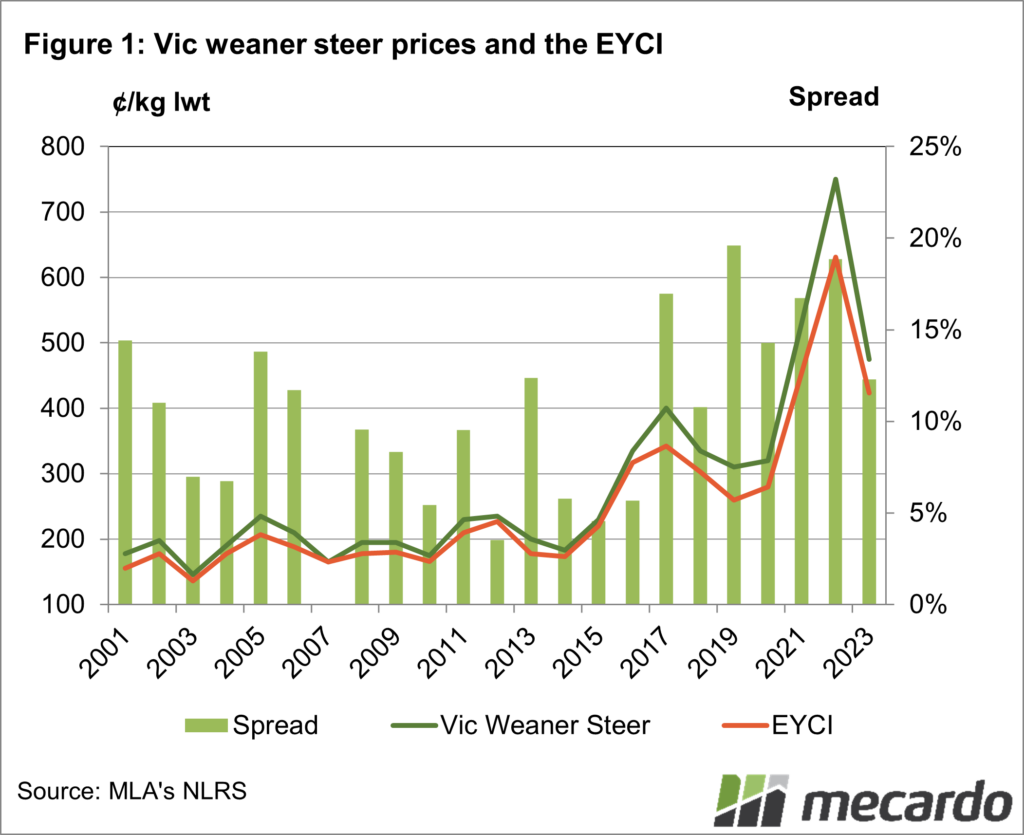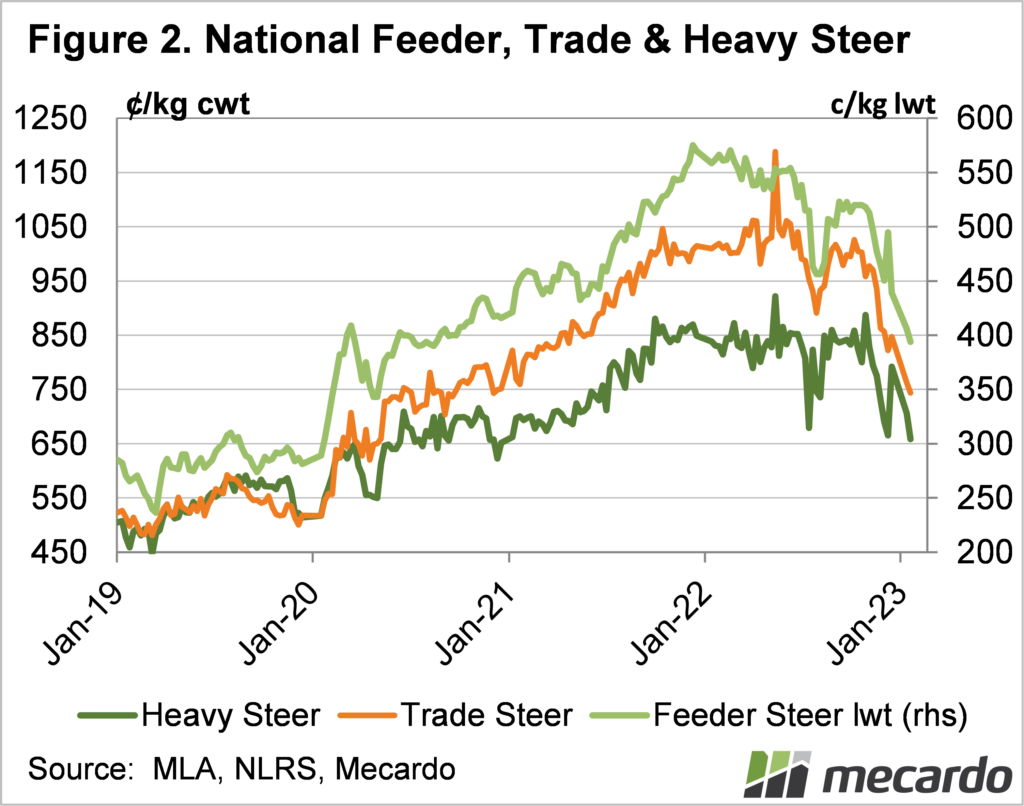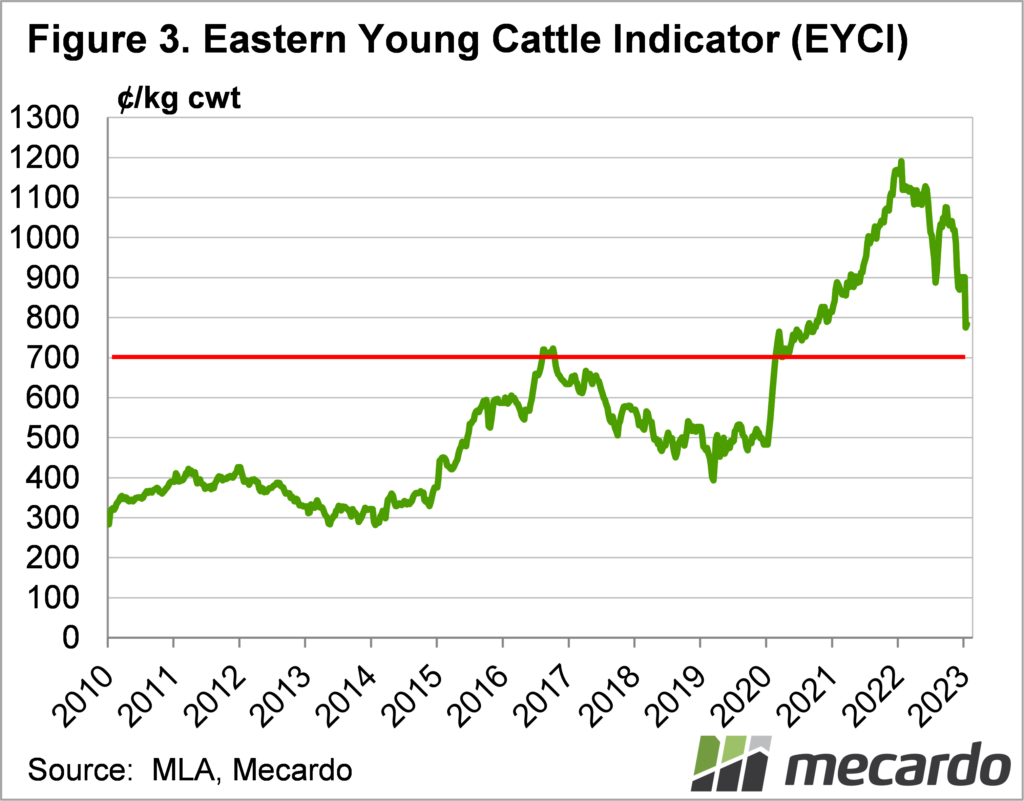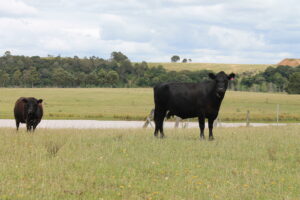A fortnight ago we looked at the ‘weaners’ sale prices and surmised that the lower prices likely pointed to the Eastern Young Cattle Indicator (EYCI) opening lower; maybe not as low as eventuated however. Here we revisit weaner value with the added insight of early indicator levels.
With southern angus weaner steers averaging around 475¢/kg lwt, they seemed very cheap relative to the closing EYCI of 2022. Compared to the opening EYCI, they were still historically cheap, but not dirt cheap.
Figure 1 is an updated version of the chart we showed two weeks ago. It shows both weaner prices and the EYCI falling heavily relative to last year, and the weaner steer price holding a 12% premium. Weaner steers held their lowest premium to the EYCI since 2018, but absolute prices were still the third highest on record.
All cattle indicators have opened the year lower, with young cattle having the worst performance. Figure 2 shows the National Feeder Steer Indicator fell through 400¢/kg lwt for the first time since August 2020 last week. Trade steers exhibited similar lows, while heavy steer prices have had a couple of previews of these prices in the saleyards over the last six months.
We knew prices would be lower this year, but few thought the correction would come this early. Declining beef export demand and prices are part of the problem for cattle prices. Lower beef prices flow into lower finished cattle prices, which means lot-feeders have to adjust feeder prices, and suddenly backgrounders are carrying cattle worth less than they paid for them.
Restocker buyers now have to adjust their pricing and it likely means store cattle will get a little cheaper; if feeders don’t stage a recovery.
When is a good time to jump in and buy? Having a look at the long-term chart in figure 3, the level of 700¢/kg cwt for the EYCI looks like an important support level. With the 90CL indicator at 730¢/kg, the support might come a little earlier.
What does it mean?
An EYCI at 730¢/kg cwt comes in at around 400¢/kg lwt, which would put weaner support at 440-450¢/kg, and not far away. There are plenty of positives for international beef prices in the medium and longer term, so the bottom of this market might not be too far away.
Have any questions or comments?
Key Points
- Weaner prices were at a premium to the EYCI, but it was still weak relative to last year.
- Cattle prices have fallen across the board early in 2023, but support isn’t far away.
- The cattle outlook is positive in the medium term, early 2023 might be a buying opportunity.
Click on figure to expand
Click on figure to expand
Click on figure to expand
Data sources: ABS, MLA, NLRS, Mecardo















